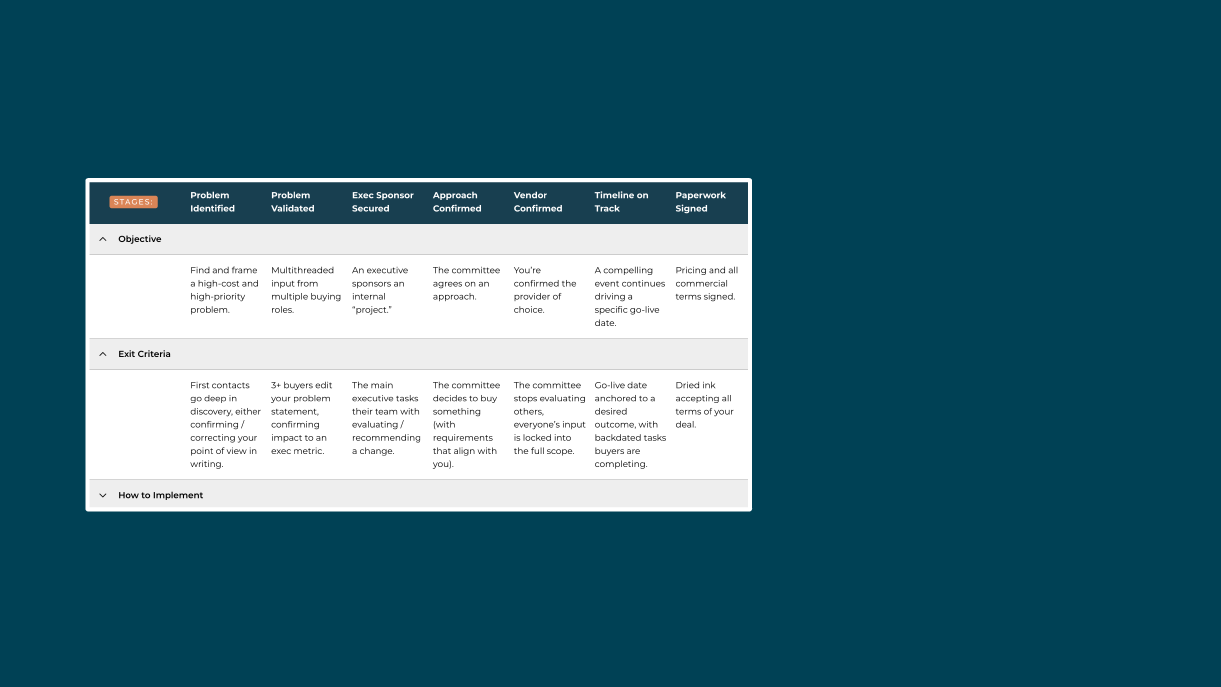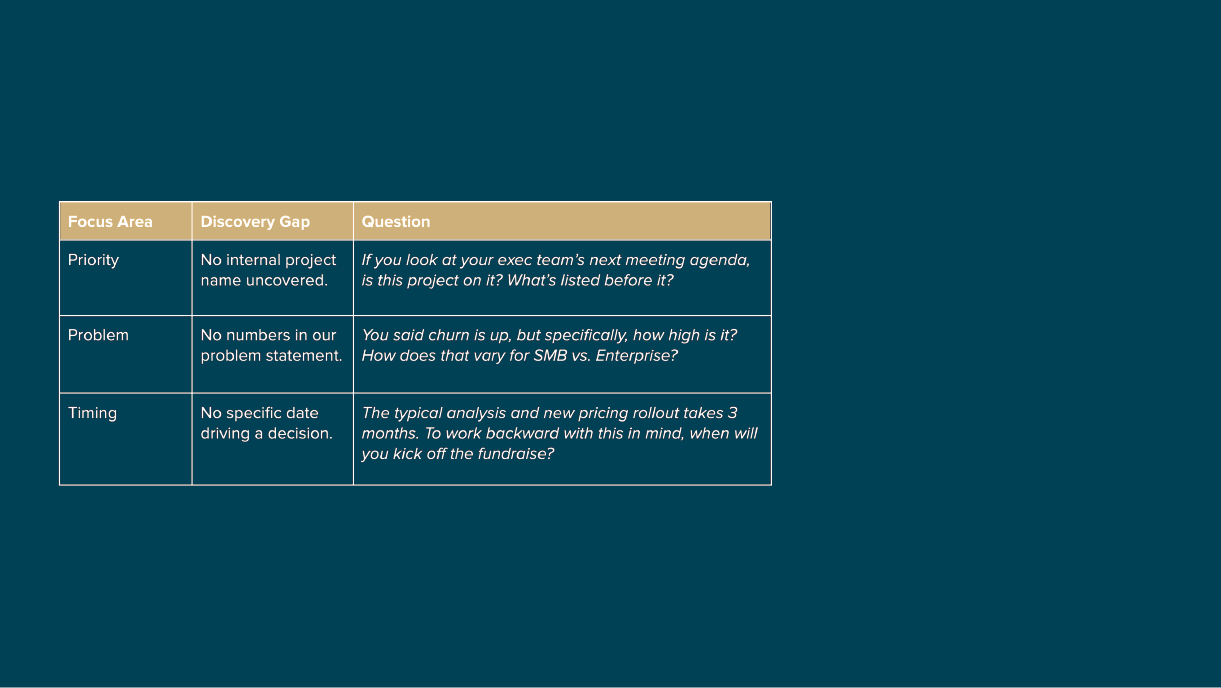The Business Case *is* the Sales Process
This is one of the most important posts I’ll write on this blog.
Because it represents a massive shift in how sales teams view their jobs, and how they go to market. It’s the entire point of view guiding what we’re building at Fluint, too.
To start, most people believe that:
- Building a business case is an activity.
- That activity is one part of the sales process:

But that’s wrong. And this way of thinking and operating leaves an incredible amount of revenue on the table. Instead, here’s the right way to think about it:
- Building a business case is the sales process.
- Every other activity rolls up into the business case.

Your Sales Process = Building Business Cases
The entire point of a sales process is this:
Influencing the buying process.
That's what creates revenue. Sure, there are other benefits (forecasting, repeatability, etc…), but they're all secondary goals to generating revenue.
And while there’s some overlap between activities in a selling and buying process, a seller’s activity is just a fraction of the internal sales process the buyer leads.
That's right. Your buyers — more specifically, your champions — are selling too. In fact, over 90% of that internal selling happens without sales reps in the room.
Which is where the idea of your business-case-as-the-sales-process comes in:
Since your writing can be "in the room" when you can’t be, building a business case is the process of building influence in the buying process.
The whole point of selling.
So business cases aren't just one activity to check off. It's an ongoing process, that every other activity is guided by, strengthened by, and rolls up into.
Your Single Greatest Sales Velocity Driver
You sales process is measured by how effectively it does 4 things:
- Increasing the # qualified opportunities (without shortchanging the next 3 drivers).
- Closing a higher % those opportunities.
- Increasing the $ value of each deal closed.
- Closing them faster (effectively extending days to sell in a year).
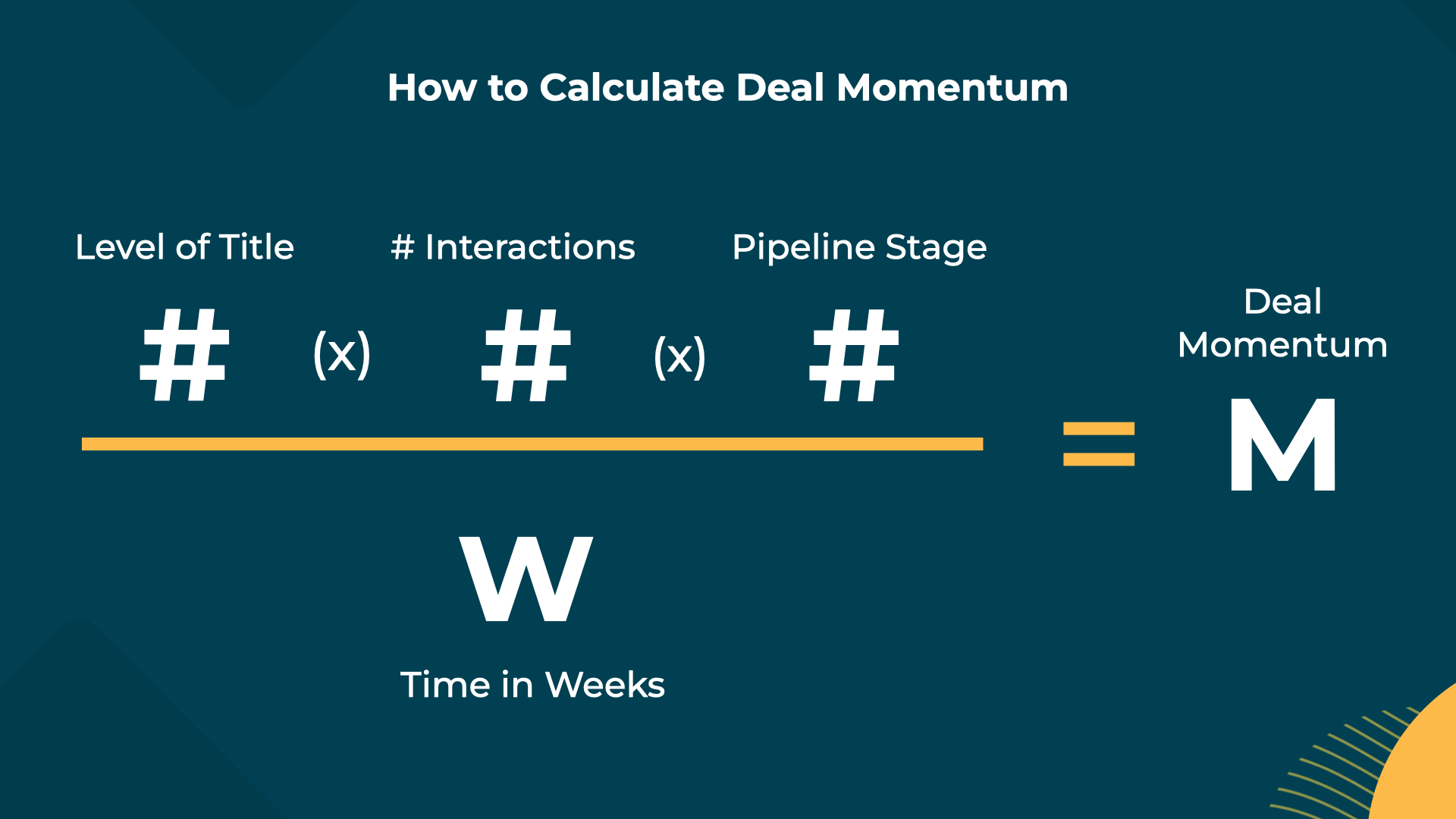
That's it. The sales velocity formula:
[ # Opportunities x Win Rate x ACV ] / Sales Cycle
Business cases are the highest-impact, yet most-overlooked approach to dialing up velocity.
- Why the highest impact?
Because it's the only approach that moves the needle on 3 / 4 drivers at the same time.
- Why the most overlooked?
Because in our survey of 315 companies, sales teams only had a documented business case in place for 8% of deals in their pipeline. (If you look at your pipeline, what % of deals actually have a business case?)
Which makes this a massive, untapped opportunity.
Here's a snapshot of the outcomes we've measured across Fluint pilots after making this shift.
For deals with a customer-validated business case, built with the champion vs. those without a business case.

Not bad, right?
It's a well-documented gap, too. For example, in Ebsta's 2024 State of Sales report, with data from 510 businesses and 4.2 million opportunities, they found:
- An 8.9X delta in sales velocity between high-performers, and others.
- High-performers (those who build business cases) represent 17% of reps.
- Those 17% of sellers generate 81% of the organization's revenue.
That's a massive gap. So, the question is, how do you enable your entire sales team to build business cases?
Well, you build a process around it.
An Entire Sales Process, in 1 Page
We could redraw the sales cycle up above, to look something more like this:
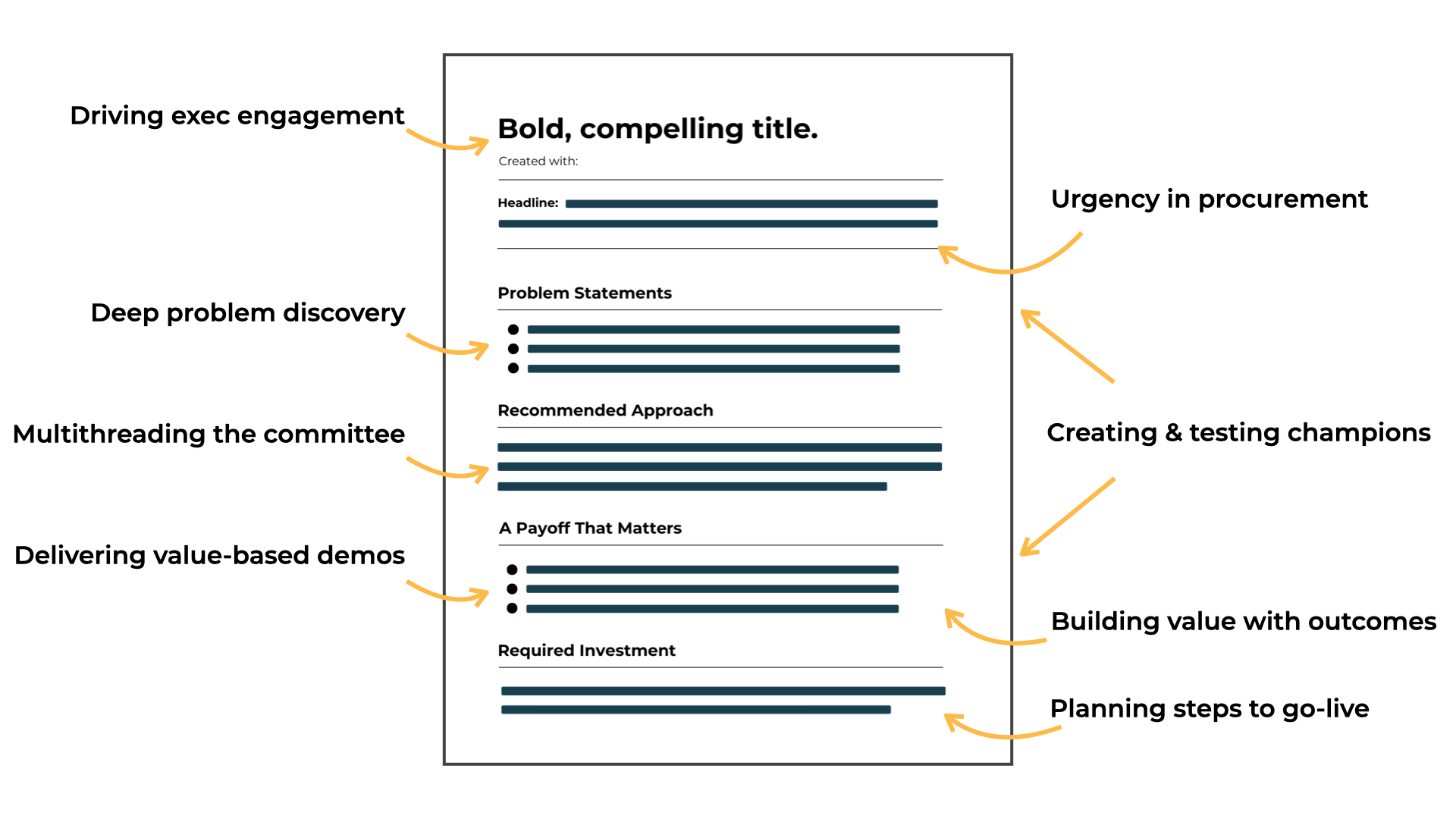
Which means that a single page of content — the business case — both guides and captures the sum total of every single selling and buying activity in a deal. Activities like:
- Finding and framing a high-cost, high-priority problem.
- Creating champions and building commitment to the deal.
- Securing early, executive sponsorship for a new project.
- Multithreaded validation, from different points of view.
- Aligning the entire buying committee on your approach.
- Confirming a scope of work, to deliver a specific outcome.
- Planning out mutual steps to go-live by a compelling event.
- Sharing context that maintains urgency with IT/procurement/etc.
All of this flow from, and rolls up into, the business case.
For example, here's Fluint guiding a seller on how to shape their deal, with recommendations for deeper discovery alongside the champion. To test for their commitment (will they create together?"), and develop an executive-level message together.

Building Business Cases is Your Enablement Program, Too
Business cases are like an entire enablement program, compressed into one document. Ask your reps to write a business case, you’ll see exactly which skills are strong — or not so strong.
Skills like…
- Deep discovery to find risk and fill gaps.
- Multithreading with a wider group of contacts.
- Testing/building champions.
- The full list above.
It's the most practical, hands-on way to measure both skills gaps and deal risks.
Because a sales leader can pick up a business case document and immediately see:
- (Discovery) Are we finding a compelling reason to change? How much data vs. fluff is on the page? Did we get beyond workflow and process, to priorities and strategic initiatives?
- (Demos) Do we know which outcomes matter to the team? What their required capabilities are? Which features we’ll spend more/less time on accordingly?
- (Internal Alignment) Does our own executive have enough context before joining a call? What should CS / implementation expect to deliver? When are we going live?
- (Multithreading) How many people do we have input from? Does this represent one or multiple points of view? Who contributed what content? And do we have “evidence” of their engagement?
- (Forecasting) Does finance, procurement and legal, etc… have the strategic context to push this through on time? While keeping deal value intact as we negotiate commercials?
- (Champion Building) Did key contacts with influence help write this? Do they feel a sense of ownership? Did they change our draft to make sure it’ll land?
We could go on. But you get the idea (hopefully).
Now, here's the other nuance:
Since champions are the real definition of “inside sales reps,” they need to be enabled.
The content that goes into co-creating a business case with them is your buyer enablement program, baked right into your process. Shifting the role of a seller, into an enabler:
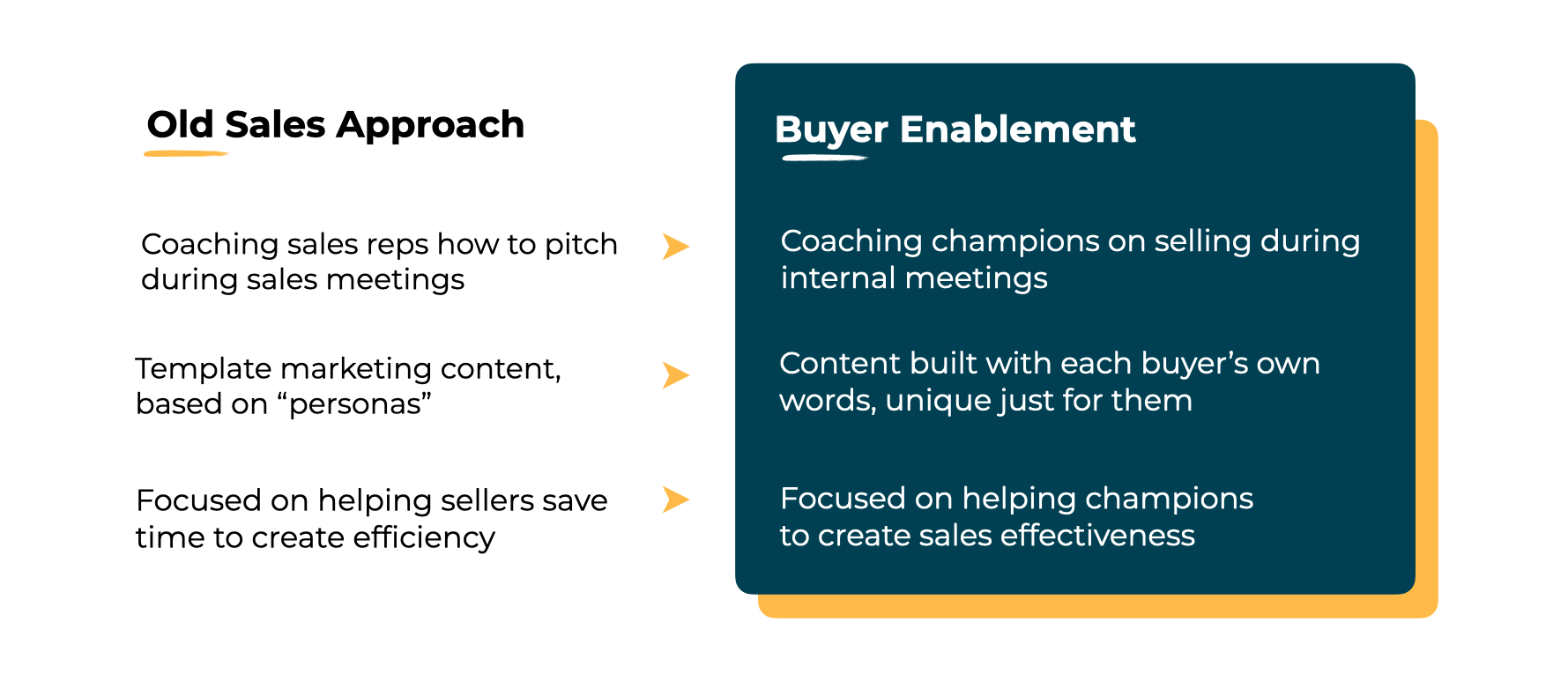
For the sake of clarity:
Stacking up a bunch of marketing-built decks, demo recordings and case studies onto a landing page (vs. email attachments), is not “buyer enablement.”
It’s old-school sales enablement dressed up as buyer enablement. Saying “we're giving buyers the information they need to make decisions!” is very different from the process of creating an account-specific business case with the customer.
Why & How to Rollout Your Sales Process 2.0
It’s a rare sales team who’s saying they’re ahead on their pipeline goals right now.
Building a fat pipeline, to win by sheer volume of opportunities is becoming increasingly difficult and expensive. Instead, driving up “revenue-per-rep” with higher close rates and contract value is the focus.
The Business-Case-as-Sales-Process shift makes this happen. For example:
→ Fluint user Daniel Burke at Sprout Social jumped from 40% (already much higher than your average) to 70% win rates by building business cases.
→ Gabe Marshall cut 50 days off his sales cycle.
Yet, building business cases remains the most-overlooked way to drive sales velocity.
Why do I say it’s overlooked?
Because in a sample of 190 sales teams we’ve worked with over the past 12 months, prior to engaging with us, they only had a business case in place for 5% - 10% of deals in their pipeline.
(You can do a quick gut check here. If you look at your pipeline, what % of deals actually have an account-specific business case built with the customer?)
That range includes revenue organizations with dedicated value engineers, by the way.
So the question is:
If we know deals with a business case close at a higher rate and value than those without, why aren’t we building more business cases?
One answer is that it’s a skills gap. Sellers haven’t been taught how to build them with the buying team.
The more likely answer is this fundamentally changes the way revenue leaders architect their sales-led go-to-market.
So let's talk practical steps to make this shift:
Before:
- Reps build business cases or bring in Value Engineers to “close” fate-stage deals.
- That’s if they create one at all.
After:
- Reps start drafting the business case after their very first call.
- The business case develops at each stage of the pipeline.
- While exposing discovery gaps and deal risks along the way.
1/ Anchor every step and stage in the case.
For example:
- Doing a demo? Use it to design the game plan.
- Meeting an exec? Share it as a pre-read.
- Negotiating? Use it to maintain deal value.
- Multithreading? Have champions forward it.
There’s a use case at each step of the way. As a deal progresses through each of these activities, the business case should get stronger.
Feel free to adjust the specifics, but it looks something like this:
- Stage 1 = 2/5
- Stage 2 = 3/5
- Stage 3 = 4/5
- Stage 4 = 4.5/5
- Stage 5 = 4.9/5
Which also implies there's a way to score your business case against "what good looks like."
So just like you'd use a scorecard for a call review, you can and should do the same with business cases.
Here's a framework you can use by the way, based on the "1-Page Business Case."
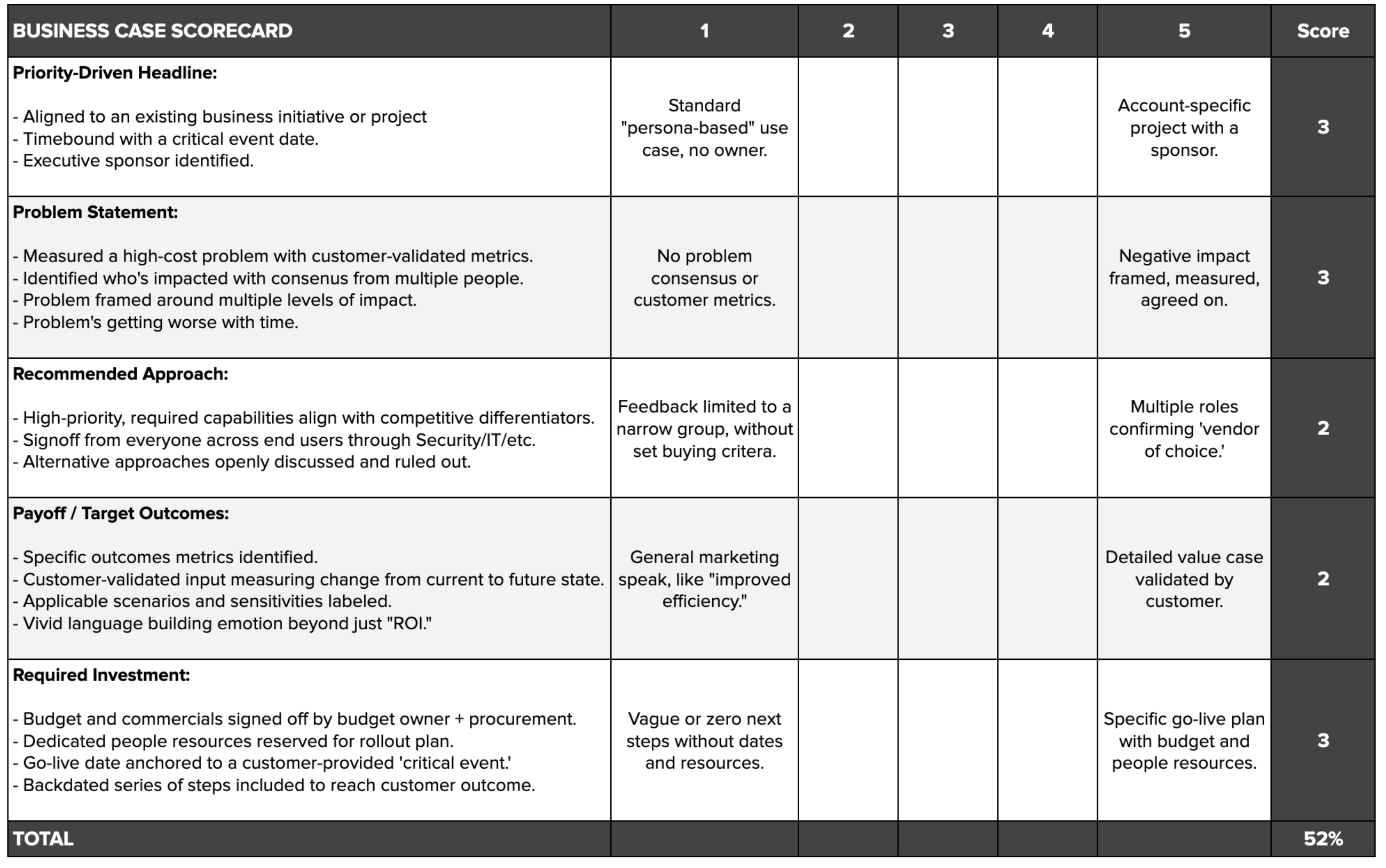
2/ Start drafting business cases on the first call.
This is how you’ll show your first contacts you heard them, and have a point of view.
It’s also how you’ll start to drive more executive buy-in far earlier in the deal (creating more momentum and shorter cycles), with deep discovery.
→ Fluint can also write this draft for you.
3/ Start and end conversations with content.
There are a couple benefits to bringing content into your live conversations.
First, we can’t help but correct something that’s inaccurate or incomplete when we see it in writing. Words feel too permanent to let stand uncorrected.
(That’s why Cunningham's Law, named after the wiki inventor, says the best way to get the right answer isn’t to ask a question — it's to write down the wrong answer.)
So don’t just say a problem statement. Show it in writing.
Second, you’re creating context to quickly get new buyers up to speed.
While guiding your champions, when they take on the work of aligning others at the start, or to confirming next steps at the end, of a conversation.
4/ Build accountability checks into the process.
Teams who embrace their Sales Process 2.0:
- Pressure test the case during deal reviews and forecasting.
- Create scorecards to measure how strong the case is (not).
- Create 1:1’s and coaching agendas based on gaps it reveals.
- Require the content to be built to progress deals in the CRM.
5/ Rollout Fluint.
Of course. You can see how it works here:
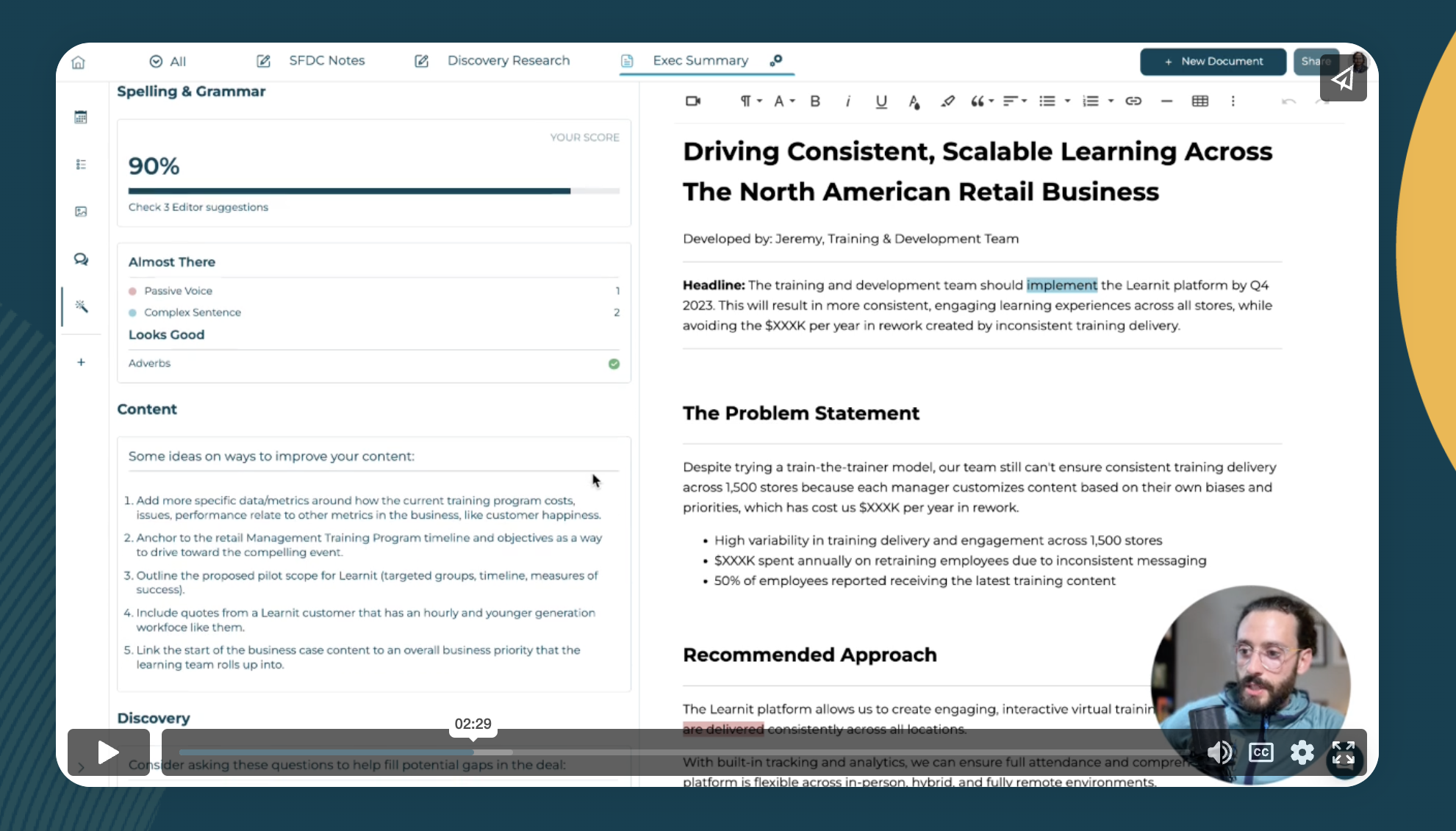
Final Thought:
As you start to apply this, you’ll notice that, little by little, one document at a time, the buyer is becoming the center of your sales culture. Their problems and outcomes become the first focus.
And I hear you, peanut gallery. If you’re still raising a skeptical eyebrow at this idea, let me share a parting thought on how everyone in the revenue organization benefits from this shift, bulleted by role.
- Sellers (new & existing business): a clear roadmap to find and fill deal gaps with champions.
- Leadership: grounds forecasts in the reality of where deals actually are.
- Enablement: identifies skill gaps and coaching plans for deeper training.
- Value Engineers: builds a narrative early to bring meaning to ROI.
- SalesOps: defines minimum standards by stage for cleanCRM data.
- Customer Success: a specific recap of what’s promised to the customer.
Since this shift is based on both, (1) written content, and (2) buying behaviors, everyone can tangibly see what’s actually been created at any given time.
So much so, you almost shouldn’t need point-in-time QBR’s to assess deal health. Just open up the written business case, it'll be glaringly obvious.
Why stop now?
You’re on a roll. Keep reading related write-up’s:
Draft with one click, go from DIY, to done-with-you AI
Get an executive-ready business case in seconds, built with your buyer's words and our AI.
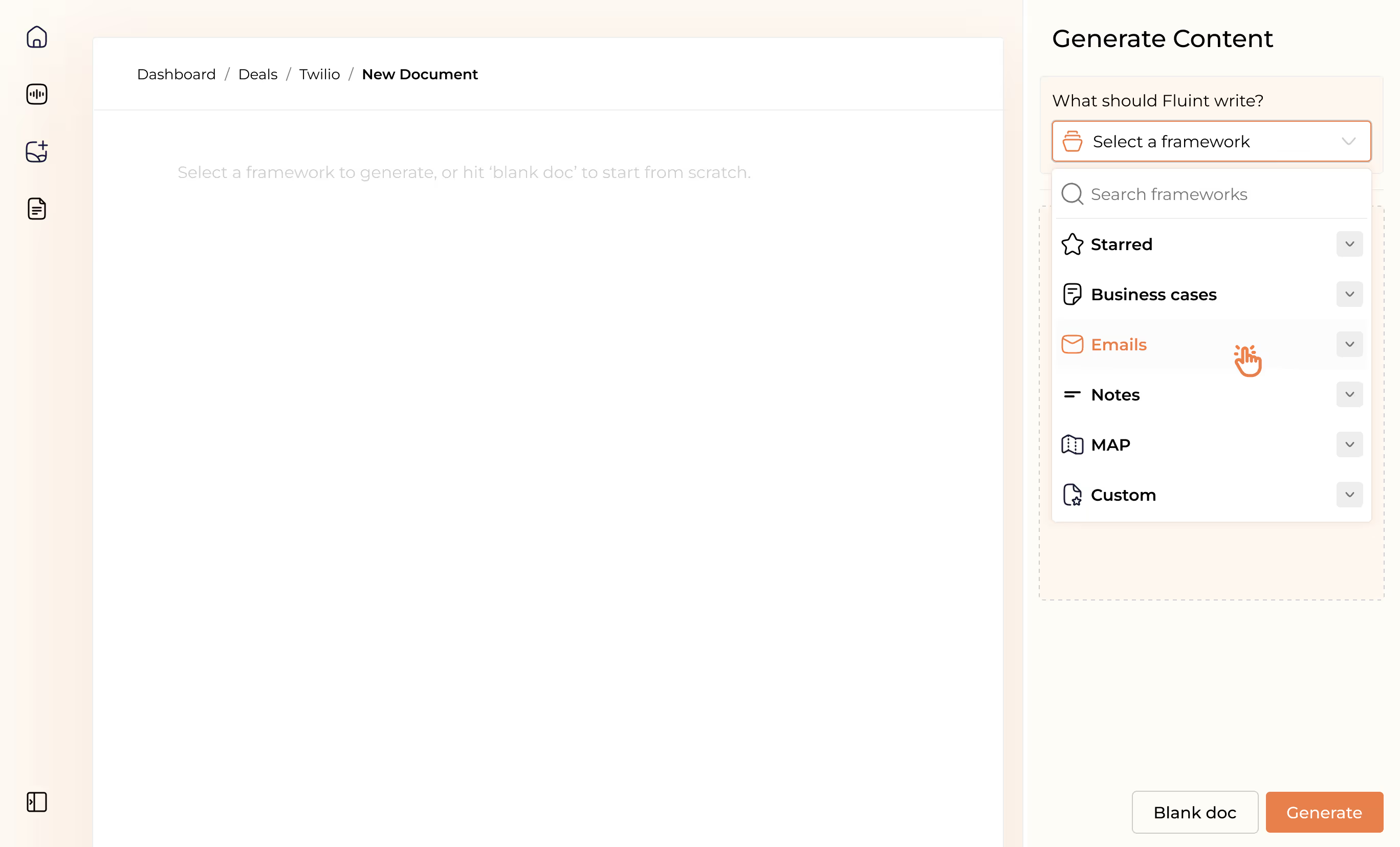
Meet the sellers simplifying complex deals
Loved by top performers from 500+ companies with over $250M in closed-won revenue, across 19,900 deals managed with Fluint

Now getting more call transcripts into the tool so I can do more of that 1-click goodness.



The buying team literally skipped entire steps in the decision process after seeing our champion lay out the value for them.


Which is what Fluint lets me do: enable my champions, by making it easy for them to sell what matters to them and impacts their role.




